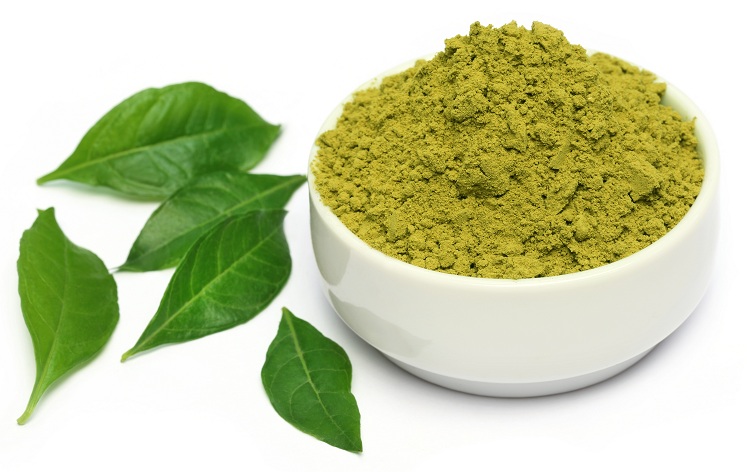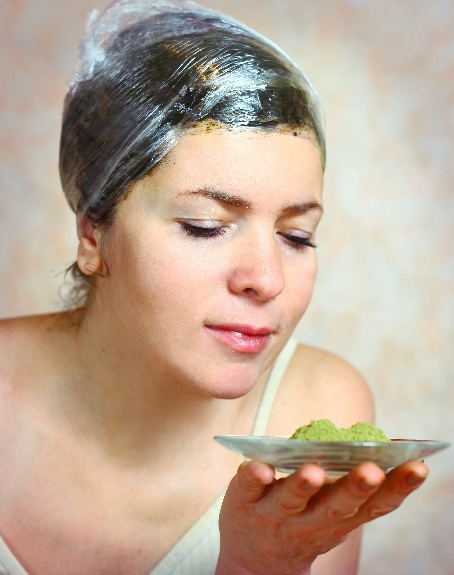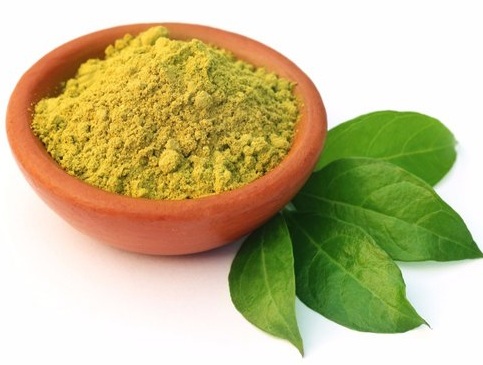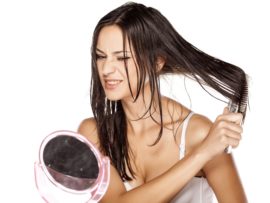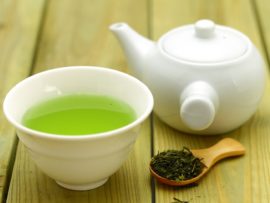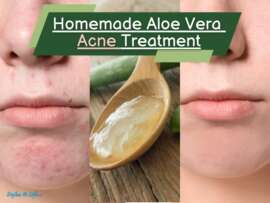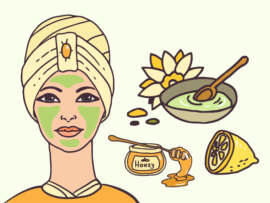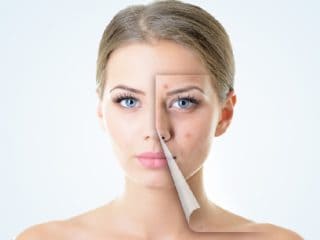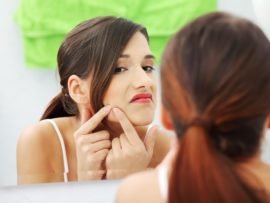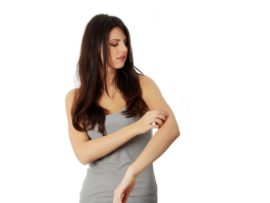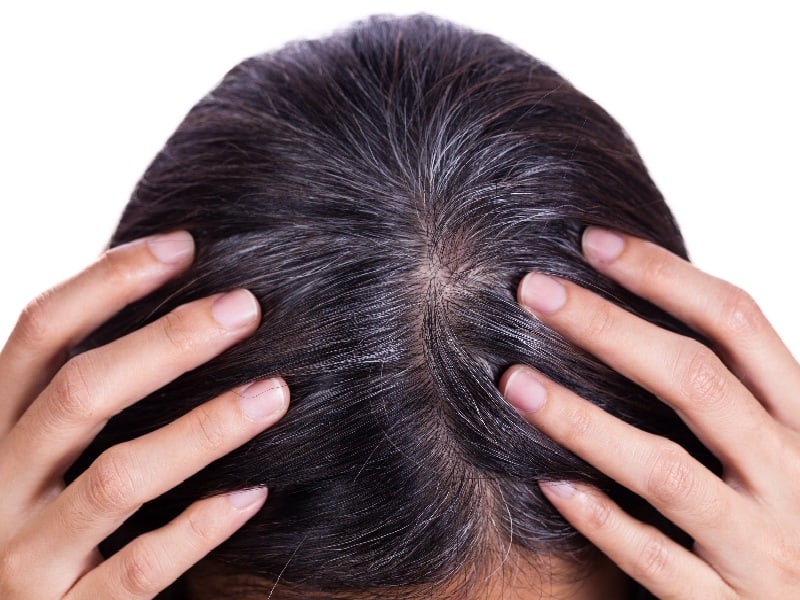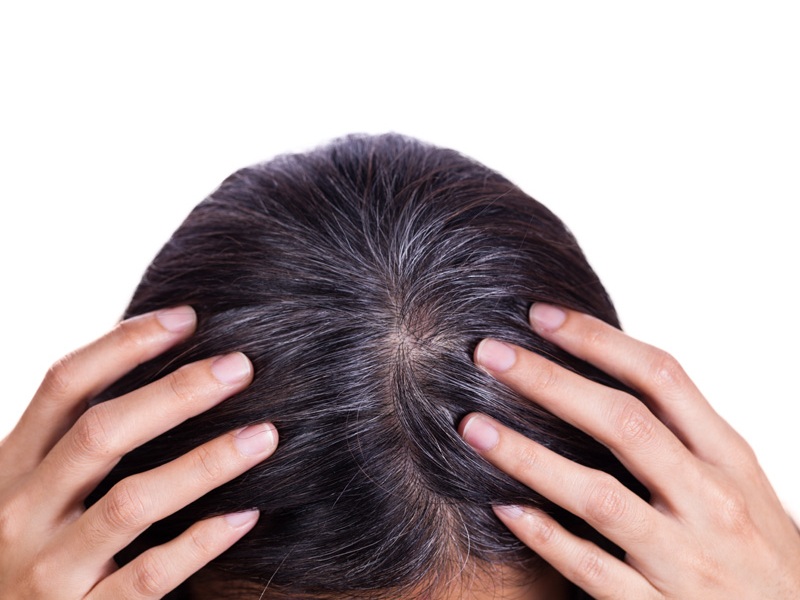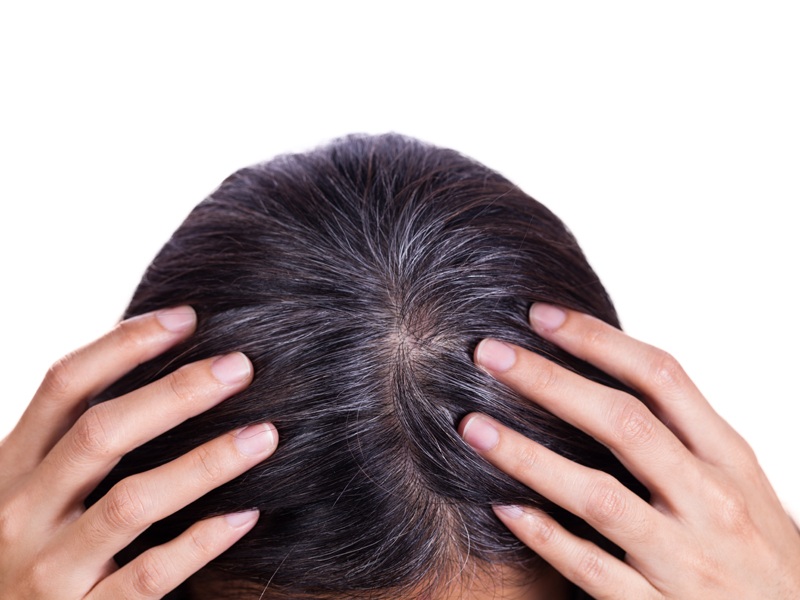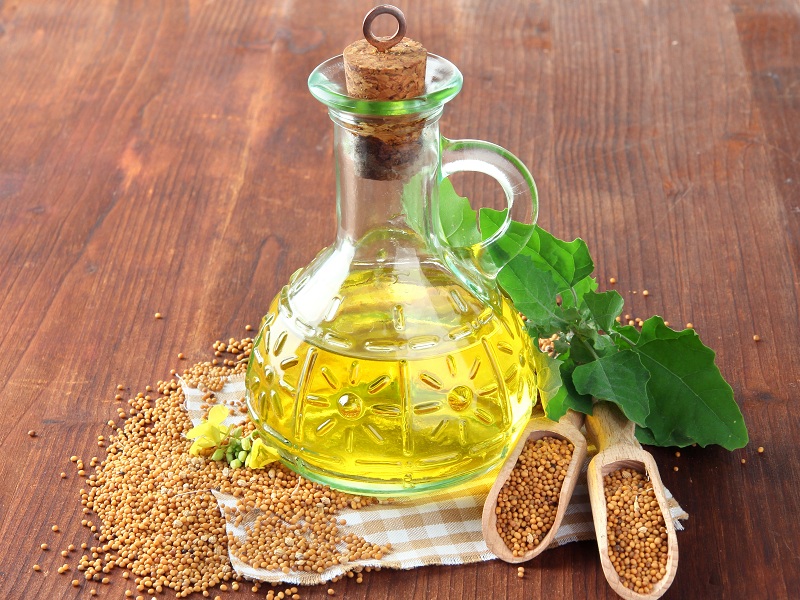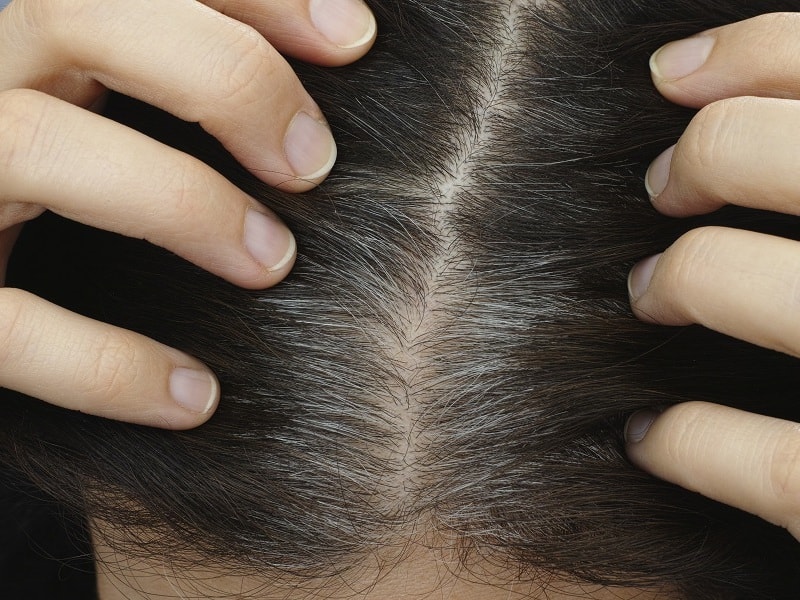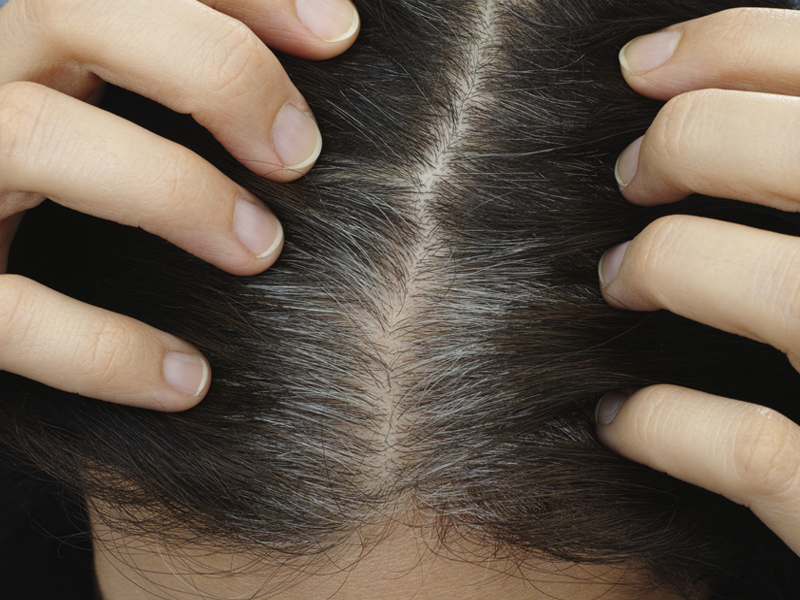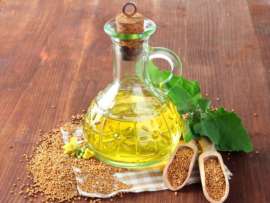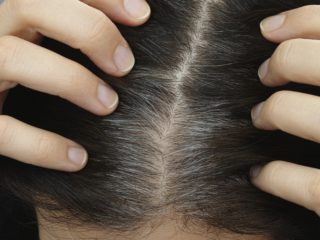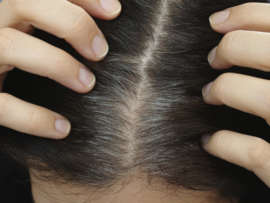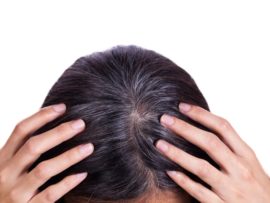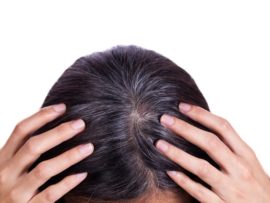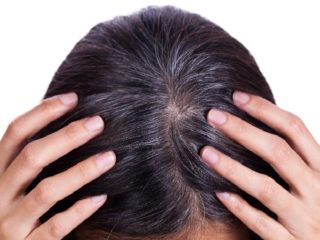Have you noticed your first few strands of grey hair? Do you want to cover them up but are too afraid to use chemical dyes? No worries! Try using Henna! This naturally available dye leaves a rust-brown pigment on your grey hair that almost looks ‘blackish’ from a distance. So, no one will ever doubt that you are hiding those silvery strands away from the public eye.
In this article, we shall learn how to use Henna for grey hair at home with a step-by-step procedure of mixing and application.
What Is Henna And How Does It Help Your Hair?
Henna is prepared from the leaves of the Henna tree, which contains a dye that leaves a brownish-orange stain on the surface where it is applied. Either the paste made from the leaves or the dry powder is mixed with water and other ingredients. This mixture is left overnight for the dye to get released.
The paste is then applied to the affected strands, covering from root to tip, and left to dry for 2-3 hours. Along with covering up the premature grey hair, natural Henna can also cool down your scalp by treating inflammatory symptoms like itching, flaking etc.
NOTE: Red Henna is the only natural Henna, and the other forms like black Henna or neutral Henna available in the market are adultered products.
[ Read More: How To Treat Premature Greying ]
How To Apply Henna For Hair?
Applying a Henna for hair may be a bit of a challenge for beginners. Especially if you have thick and long hair, you might need a helping hand to apply the paste properly for the best coverage of greys. Before we learn how to apply Henna, let us first learn how to mix it in the right way.
For This, You Will Need,
Ingredients:
- Henna Powder – 100gms to 300 gms (Depending on the length of hair)
- Tea Water or Coffee Water – 2-3 Cups
- Iron Skillet
- Lemon Juice – 1 tbsp
- Egg or Yoghurt – 1 yolk or 2 tbsp (for conditioning)
Method:
- In an iron skill, mix all the ingredients listed above.
- Mix well until you see no lumps
- Soak the mixture overnight or for 6-8 hours
- Apply the product to your hair the next day
Application Procedure:
- Section your hair with clips
- Use your hand (wear gloves to avoid staining) or a brush.
- Apply the paste on a thin section of hair from root to tip generously
- Now roll it on top of your hair and plaster it with more Henna.
- Now take another section and repeat the process.
- Roll it over the previous section and plaster it again with henna paste.
- Keep doing that with hair from the crown section to the nape of your neck.
- Once you are done, use the extra henna paste to plaster the hair.
- Use a shower cap to hold the hair in place.
WAITING TIME: 1-2 Hours:
- Once dry, wash it at least 2-3 times with lukewarm water and avoid shampoo.
- Rinse thoroughly to remove the product from your hair
[ Read More: Henna for Hair Growth ]
How to Use Henna To Get Black Hair?
If you don’t prefer the reddish tint on your hair and instead want a natural black shade, then try mixing Indigo with Henna powder. Indigo is a natural dye that is deep blue in colour. When mixed with henna powder, the blue and red combination turns into a black shade.
Now, there are two different ways to use Henna and Indigo dye for grey hair coverage. Some people prefer mixing them and using them as a single application. However, this method is not quite effective in giving the right result. Experts recommend applying henna+hair wash+indigo paste to achieve glossy black hair.
Here is how to mix Indigo paste for colouring your grey hair:
You Will Need:
- Organic Indigo Powder – 100 gms
- Salt – 1 tbsp
- Water – To achieve desired consistency.
Procedure:
- Mix all the ingredients well in a bowl
- Use this paste within ten minutes.
NOTE: There is no need to presoak Indigo, as the dye gets released very quickly.
How to Apply?
- Firstly, apply a Henna on your hair using the procedure mentioned above.
- Wash your hair with plain water to get rid of the product
- Dry your hair using a towel or blow-dry in a cool setting
- Now apply this indigo paste the same way you did for Henna.
- Leave it on your hair for at least 2 hours as the processing time of Indigo is longer than that of Henna.
- Rinse your hair thoroughly with water
- If all goes well, you should get naturally black-coloured hair.
[ Read More: Organic Henna Hair Dye Powders ]
Best Combinations To Use with Henna Powder:
Natural Henna can dry out your hair. So, many people prefer adding natural conditioning agents to achieve smoother, stronger hair, along with a clean scalp. Here are some of the commonly used ingredients with Henna powder.
- Amla Powder
- Fenugreek Powder
- Egg
- Yoghurt
- Banana
- Multani Mitti (For oily scalp)
- Hibiscus Leaves
- Green Tea
Precautions to Take While Applying Henna on Hair
To ensure a safe and effective experience with Henna, follow these precautionary measures:
- Ensure that the Henna powder you use is 100% organic and safe from harmful chemicals
- Say NO to Black Henna or Kali Mehndi which has more chemicals than natural Henna. Remember that real Henna is never black in colour!
- Before using Henna, apply petroleum jelly over the forehead, neck and ears to avoid accidental skin staining due to drips.
- If Henna accidentally gets into your eye, use plain water to rinse out the product thoroughly. If redness and burning sensation don’t subside, visit an eye specialist immediately.
Final Thoughts:
So folks! Now that you have understood how to apply Henna for grey hair coverage, it’s time to try it at home! The application procedure might be cumbersome and messy compared to chemical dyes. But the long-term benefits outweigh the efforts involved in using it. So, have a little patience and use it a couple of times to notice the difference.
FAQs
1. What is Black Henna, and why is it not safe for hair?
Black Henna, popularly known as Kaali Mehndi is not real Henna. Many brands make false claims that Black henna is made with henna and indigo powders with low processing time. However, this is far from the truth. The main ingredient in commercially available black Henna is Paraphenylenediamine or PPD. This is a dangerous chemical that can lead to several skin infections and burns.
2. Is Henna suitable for dry hair?
Natural Henna has drying properties, making it good for people with oily and greasy scalps. However, it can worsen dry and frizzy hair problems. To counter this effect, you can add conditioning agents like egg, Yoghurt, hibiscus powder etc.
3. Can Henna be used on chemically treated or dyed hair?
Natural Henna may not react with the chemicals in the hair dyes or perming products. However, you might notice your hair turning more brittle and rough due to the stripping of natural oils. Once you apply Henna to your hair, it takes a very long time for the dye to fade out completely. So, if you want to cover up the red tint with a dye, the absorption can get really low!


